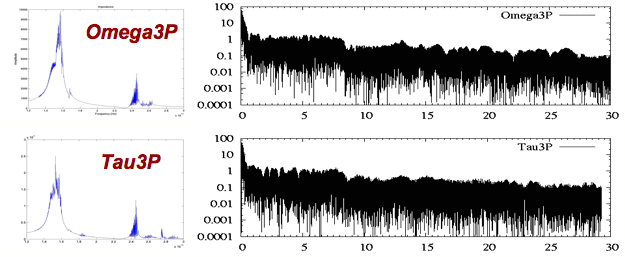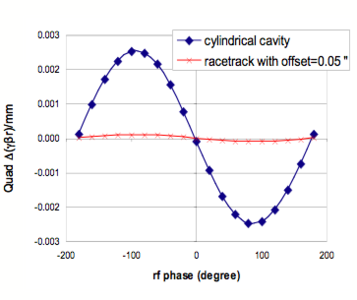...
Wakefield Computation for the NLC H60VG3 DDS
The Damped Detuned Structure (DDS) for the Next Linear Collider (NLC) was designed to provide 14% more efficiency. The following is the computer model of the H60VG3 DDS used for wakefield computations.
Using Omega3P by summing over the eigenmodes, the long-range wakefield in the entire 55-cell structure was evaluated. The wakefield agrees well with that obtained by direct simulation of driving a beam in the structure using the time-domain code Tau3P. The following shows the mode spectrum (left) and its summed wakefield (right). It was the first-ever direct wakefield calculation of the DDS and demonstrated the suppression of wakefield at long distances.
Wall loss Q for RIA RFQ
Omega3P was used to model RIA's low energy RFQ. Usind Adaptive Meshing Refinement(AMR) techniques, the accuracies in frequency and wall loss calculations improved by a factor of 10 and 2 respectively, while the CPU time used was a fraction of that without AMR. The improved accuracy of determining the frequency and Q would reduce the number of tuners and tuning range, and thus allowing a better design of the cooling system. Subsequently, this would lead to significant cost saving.
LCLS RF Gun Design
The following is a picture of the LCLS RF gun successfully commissioned in early 2007.
Using higher-order basis functions in Omega3P, the dimensions of the gun cavity were accurately determined for fabrication of the above prototype which satisfied the following important design requirements:
- mimized dipole and quadrupole fields via a racetrack dual-feed coupler design,
- reduced pulse heating by rounding of the z-coupling iris.
CEBAF Cavity (Under construction)
...



